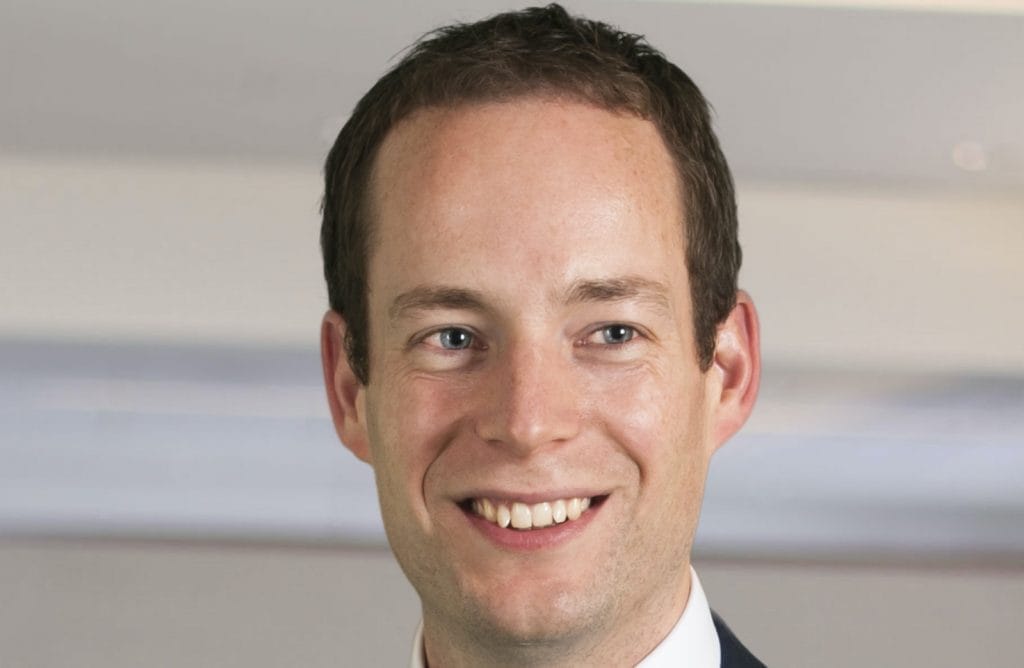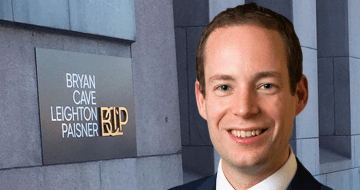Nick Pryor, innovation solutions director for EMEA at BCLP, discusses his journey from commercial litigation to driving strategic change for the firm’s Innovation team

Nick Pryor joined Bryan Cave Leighton Paisner (BCLP) ten years ago, where his role in knowledge management segued into managing the firm’s Innovation team.
Today, Pryor plays a leading role in BCLP’s Innovation team, and also sits as a product manager within the firm’s managed legal services division, ‘BCLP Cubed’, which uses a combination of technology, people, and process to deliver end-to-end legal solutions for clients’ high volume legal work. It seeks to appreciate how legal work doesn’t neatly compartmentalise, and instead requires integrated solutions from start to finish. Pryor tells me, “while a stream of work may appear simplistic at the outset, often it has a greater degree of complexity once the layers are unpeeled, and BCLP Cubed is designed to reflect this.”
This end-to-end platform therefore provides a holistic legal solution whereby legal operations, legal advice, and process optimised delivery all fall under one roof. As Pryor explains, “BCLP isn’t interested in just buying commercial software to solve a little bit of the project — we are interested in solving the whole thing.”
BCLP Cubed is also enabling BCLP to have much broader conversations with its clients from the get-go. “Getting the legal work right is important, but it is only one part in the broader picture of what clients are seeking to achieve,” Pryor says. As a result, BCLP is better able to evaluate clients’ overarching business objectives, and build a service aligned with such. BCLP Cubed was developed off the back of endless client conversations which revealed how this area of the legal market was particular underserved.
In response to such, BCLP saw an opportunity for managed legal services to be brought to the forefront. BCLP Cubed also runs in tandem with BCLP’s LegalOps consulting capability. These elements go hand in hand because “law firms don’t do their work in a vacuum — we receive instructions from clients, and we need to help manage the interface between what they do, and what we do.”
Pryor has also played a leading role in building and developing BCLP’s early case evaluation tool, Clear/Cut. This tool can give clients an early indication of their chances of success in litigation. As Pryor tells me, “litigation is never where clients want to end up — most of the time they want a pragmatic solution, so we should be steering disputes in the direction of Alternative Dispute Resolution (ADR) where we can.” Pryor also sits on the LawTechUK task force, which has recently received a number of tenders for its new online dispute resolution platform. When probed on the future of online ADR, he told me “there are already low value claims which are routinely resolved online, and this is pushing things further up the complexity chain — soon platform-driven dispute resolution will be the norm.”
Pryor’s interest in legal tech can be traced back to the work he did as a newly qualified solicitor in commercial litigation at Macfarlanes. Here Pryor became involved in early e-discovery technology, developing a fascination for the new ways of navigating through documents in big e-disclosure projects. Making the move to the then Berwin Leighton Paisner (BLP) in 2010, Pryor was drawn to the firm’s commitment to innovation, most notably through the incubation of Lawyers on Demand, a flexible lawyering business.
He took up up a role in knowledge management, as part of a transition to the business services side of law, researching how to share best practices and “build the machinery of law”. He tells me how this role therefore naturally segued into legal tech, given the increasing role of legal tech in litigation. “I tried to help the team push the envelope on how we were using technology and how we were using this to advance and promote our litigation capabilities,” he recalls. When Bryan Cave merged with BLP to become BCLP, the newly combined firm sought to set up a central innovation function. As a result, Pryor was asked to apply what he was already doing but on a broader brief, stretching across all practice areas — “it was a great opportunity to expand my perspective on the firm”, he reflects.
In his advice to those aspiring to go into legal tech at BCLP, he said, “first and foremost, you don’t need to be a coder”. Instead, you need the ability to interrogate a problem space and identify certain “pain points” to build new products around this. BCLP is planning to launch a new trainee seat in innovation in 2021. This will allow trainees to get involved in lots of different disciplines and develop the complementary skills which run alongside making the most out of legal tech. Additionally, Pryor would encourage trainees seeking to embark on a legal tech career to join BCLP’s Innovation Champions Programme — a community that discusses technology and the delivery of new approaches.
Tech opportunities are also set to increase as BCLP gears up to embrace the new Solicitors Qualifying Exam (SQE). Pryor explained how the enhanced flexibility which will come with the new route “can only be to the betterment of legal tech”, because it will enable people who wouldn’t traditionally be defined as ‘lawyers’, to enter the profession and inject fresh insight in tech spaces. The new route will also play an important role in widening access, running parallel to the paralegal and solicitor apprenticeships routes already on offer at BCLP. Pryor emphasised how, “these new qualification routes will give BCLP a really broad reach into new talent and revolutionise how we practise law in the future.”
Nick Pryor will be speaking alongside other lawyers and legal education experts at ‘Innovation and the law — with BARBRI, BCLP, Irwin Mitchell and Elevate’, a virtual student event taking place on Tuesday 8 December. You can apply to attend the event, which is free, now.
About Legal Cheek Careers posts.


